In the ever-evolving world of digital marketing, search engine optimisation (SEO) remains a cornerstone for businesses aiming to improve their online visibility. It’s a multifaceted approach, encompassing various strategies to enhance your website’s ranking positions on search engine results pages (SERPs).
In this comprehensive guide, we’ll delve into three key SEO areas, which are on-page and content optimisation, technical optimisation, and off-page optimisation. Let’s explore each category’s quick wins and best practices to propel your website towards SEO success.
On-Page and Content Optimisation
1. Optimise Title Tags and Meta Descriptions
The first elements users see in search results are title tags and meta descriptions. Craft compelling titles that include target keywords and accurately describe the page content. Meta descriptions should be concise, informative, and enticing to improve click-through rates. Consider each page’s unique value proposition and incorporate relevant keywords naturally.
You can preview your meta tags at https://metatags.io/ to ensure they will not be truncated in SERP.
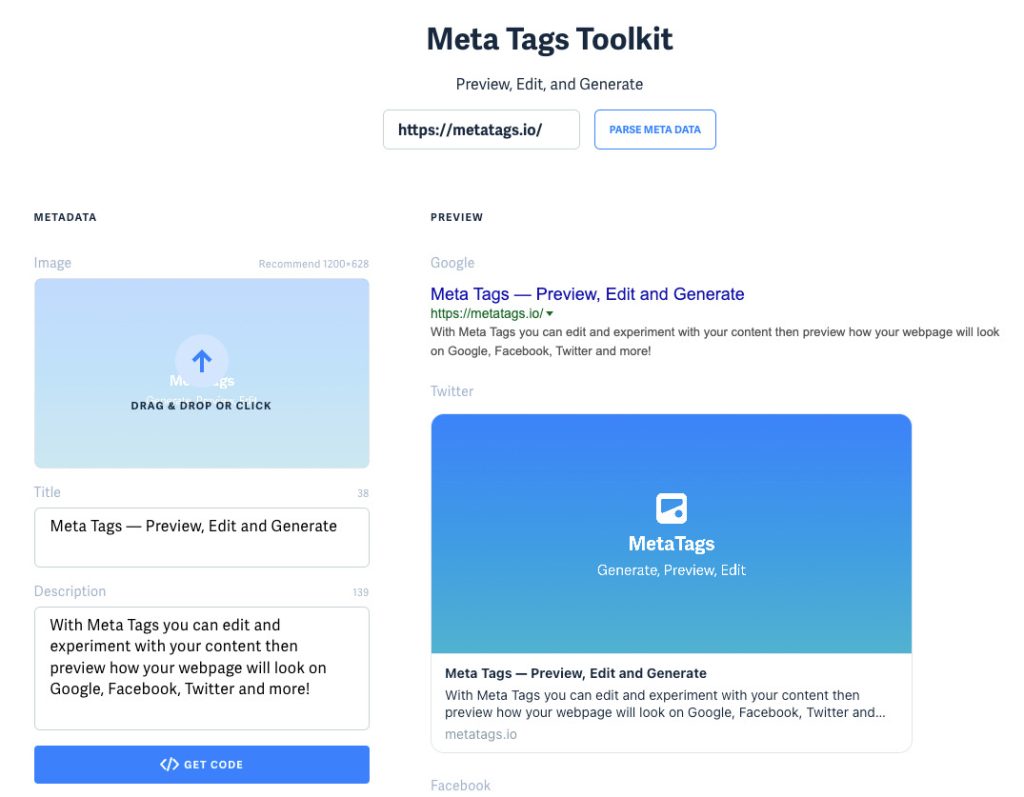
2. Optimise Existing Pages
Enhancing existing pages involves thoroughly reviewing on-page elements to ensure they are finely tuned to maximise impact. This includes:
- Alt Tags: Optimise image alt tags with relevant keywords for improved image search visibility.
- Headers: Use headers (H1, H2, etc.) to structure content logically and incorporate keywords where appropriate.
- Body Content: Ensure the content is well-structured, engaging, and informative. Incorporate relevant keywords naturally and avoid keyword stuffing.
- Internal Linking: Link to relevant internal pages using descriptive anchor text to improve navigation and distribute link equity.
3. Create High-Quality Content Regularly
Creating high-quality content regularly is not just about filling up space on your website; it’s a strategic investment in building credibility, engaging your audience, driving traffic, and boosting your overall online presence. Consider the following:
- User Intent: Understand user intent behind search queries and tailor content to provide valuable solutions.
- Keyword Research: Conduct keyword research to identify relevant topics and incorporate target keywords naturally.
- Engagement: Create engaging, shareable content that encourages user interaction and social sharing.
- Long-Form Content: In-depth, comprehensive content performs well in search results. Aim for content that thoroughly addresses the topic and provides value to readers.
- Freshness: Regularly update and refresh content to maintain relevance and signal to search engines that your site is active.
4. Optimise for Featured Snippets
Featured snippets, or “position zero,” are selected search results displayed prominently at the top of organic search results, providing users quick answers to their queries. Optimising for featured snippets is a strategic approach to improve your website’s visibility on SERP. To optimise for featured snippets:
- Answer Questions Concisely: Structure content with clear, concise answers to common questions in your niche in FAQ format, targeting ‘People Also Ask’ questions in SERP.
- Use Lists and Tables: Present information in lists or tables, as snippets often feature these formats.
- Structured Data: Implement structured data markup to provide context to search engines and increase the chances of appearing in featured snippets.
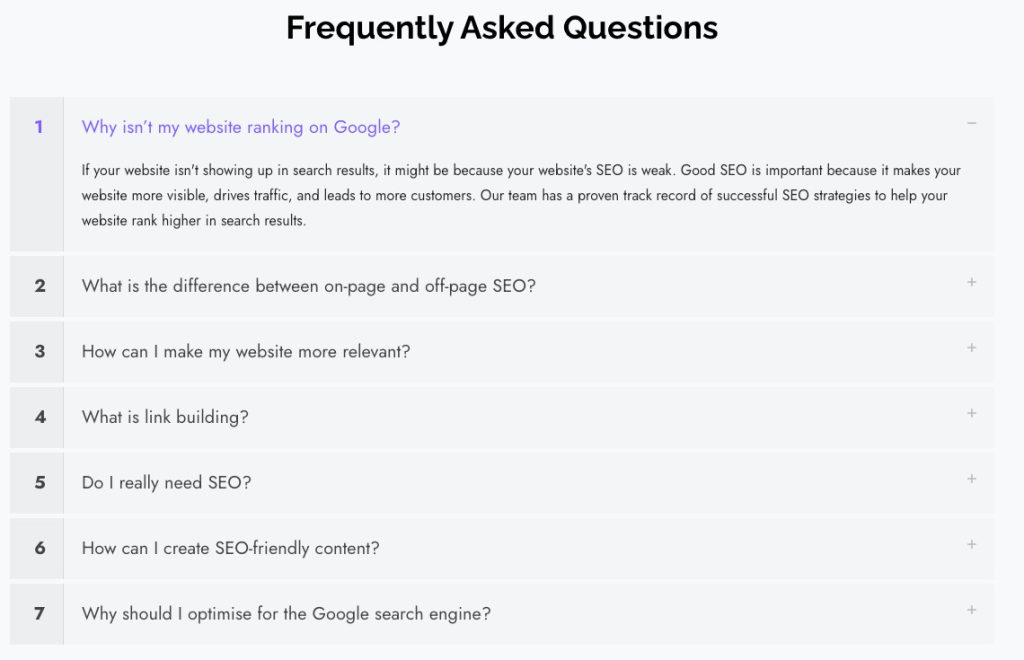
5. Target Low-Hanging Keywords
Identifying and targeting low-hanging keywords can provide quick wins for SEO. Here’s how:
- Search Console Analysis: Use Google Search Console to identify keywords your site is already ranking for.
- Analyse Click-Through Rates (CTR): Review CTR data to identify keywords with high impressions but low CTR. Optimise title tags and meta descriptions for these keywords to improve click-through rates.
- Long-Tail Keywords: Target long-tail keywords with lower competition but higher intent. These can drive targeted traffic to your site.
6. Address Duplicate Content
Duplicate content can confuse search engines and impact SEO. Google Search Console has a “Coverage” report where you can see if Google has detected any issues with duplicate content on your site. Look for the “Duplicate, submitted URL not selected as canonical” errors.
Other than that, many SEO tools offer duplicate content checking, such as Screaming Frog, SEMrush, Ahrefs, and Copyscape.
Strategies to address duplicate content include:
- Canonical Tags: Use canonical tags to indicate the preferred version of a page when multiple versions exist.
- 301 Redirects: Redirect duplicate URLs to the canonical version to consolidate link equity.
- Consolidate Similar Pages: Combine similar pages to create a single, comprehensive page.
7. Internal Linking Strategy
Internal linking is a valuable SEO strategy that involves linking one page of a website to another page within the same website. It not only helps users navigate a website more effectively but also helps search engines discover and index pages on your site, as well as distribute link equity throughout the site, which can improve search engine rankings.
Here’s a guide on how to do internal linking effectively:
- Use Descriptive Anchor Text: Anchor text is the clickable text in a hyperlink. Use descriptive and relevant anchor text that tells users and search engines what the linked page is about. For example, instead of using “click here,” use “learn more about SEO best practices.”
- Link Relevant Pages: Link pages that are contextually relevant to each other. If you’re writing a blog post about SEO tips and mention “keyword research,” you can link that term to a relevant page on your site that dives deeper into keyword research.
- Create a Sitemap: A sitemap helps search engines understand the structure of your website. A well-organised sitemap can guide your internal linking strategy by highlighting important pages and their relationships.
- Link from High-Value Pages: Pages with high authority or receiving a lot of traffic can pass on some of that authority to the pages they link to. Consider linking from these high-value pages to other important pages on your site.

8. E-E-A-T (Experience, Expertise, Authoritativeness, Trustworthiness)
Google values experience, expertise, authoritativeness, and trustworthiness (E-E-A-T) in content. Ways to enhance E-A-T include:
- Author Bios: Include author bios with credentials and expertise for articles and blog posts.
- Quality Backlinks: Earn backlinks from authoritative and relevant sites to boost credibility.
- Testimonials and Reviews: Showcase customer testimonials and reviews to demonstrate trustworthiness.
Technical Optimisation
9. Improve Page Loading Speed
Fast-loading pages enhance the user experience and SEO. Techniques to improve page speed include:
- Image Optimisation: Compress images without compromising quality to reduce file sizes.
- Minify Code: Minimise CSS, JavaScript, and HTML files to reduce load times.
- Caching: Implement browser caching to store frequently accessed resources locally.
- Content Delivery Network (CDN): Use a CDN to distribute content across servers for faster delivery.
10. Optimise for Mobile
Mobile optimisation is crucial as more users access the web on mobile devices. Best practices include:
- Responsive Design: Use responsive design to ensure your site adapts to different screen sizes.
- Mobile-Friendly Testing: Go to your website’s Google Search Console’s page experience tab to identify and fix mobile usability issues.
- Mobile Site Speed: Optimise images and reduce server response times for fast mobile loading.
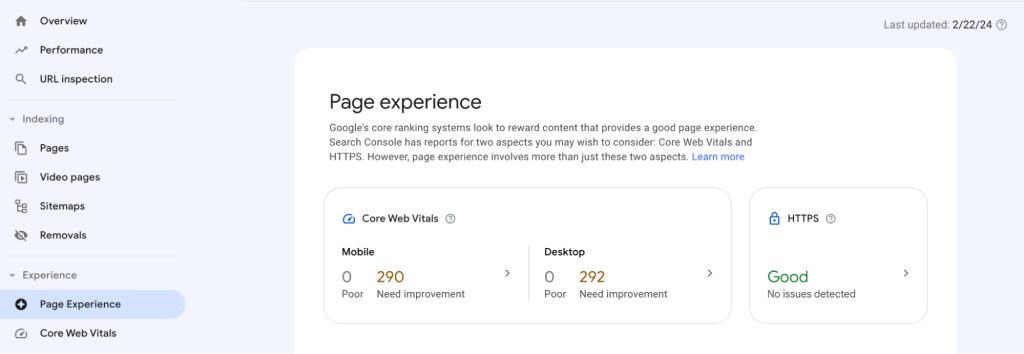
11. Fix Broken Links and 404 Errors
Broken links and 404 errors can harm the user experience and SEO. Regularly check for and fix:
- Broken Links: Use tools like Google Search Console or external tools to identify broken links. They can be found under ‘Pages’ tab.
- Redirects: Implement 301 redirects for permanently moved or deleted pages to relevant content.
- Custom 404 Pages: Create custom 404 error pages that provide helpful navigation options.
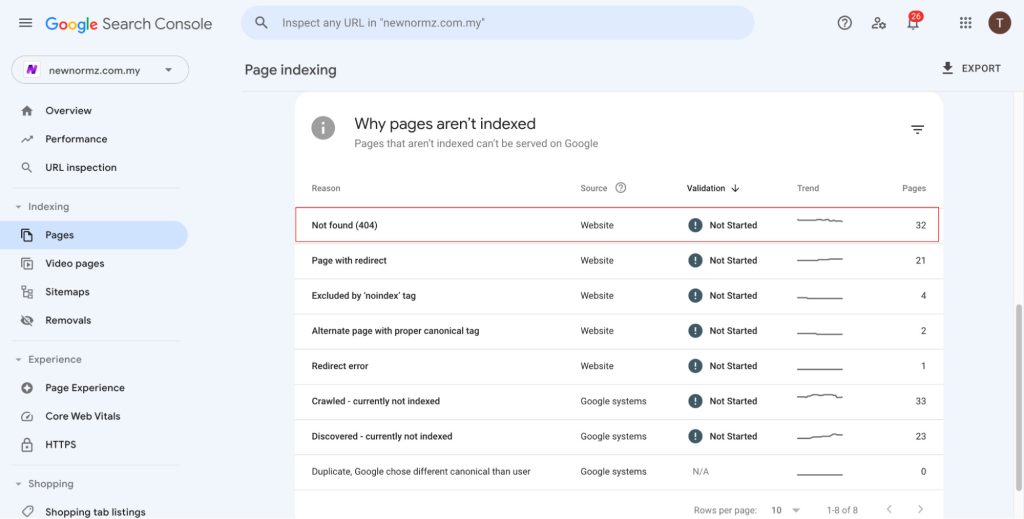
12. Use Descriptive URLs
Descriptive URLs not only help search engines understand your content but also improve the user experience. Tips for descriptive URLs include:
- Keyword Inclusion: Include relevant keywords in URLs to indicate page content.
- Short and Readable: Keep URLs concise, descriptive, and easy to read.
- Hyphens for Spaces: Use hyphens (-) to separate words in URLs for better readability.
13. Optimise Structured Data
Structured data markup provides additional context about your content to search engines. You can use the schema builder for structure data Chrome extension to identify the detected schema type and create the required schema for your website.
Some of the important schema markups include:
- Organisation Schema: Helps search engines understand the basic details about your organisation, such as its name, logo, contact information, social media profiles, and more. It can be particularly useful for local businesses.
- Website Schema: Provides general information about your website, such as its URL, author, date published, and more. It helps search engines index and display your site’s content more effectively.
- Breadcrumb Schema: Enhances the appearance of breadcrumbs in search results. Breadcrumbs provide users with a clear navigation path within your website, improving user experience and click-through rates.
- Article Schema: Beneficial for blogs, news websites, and any site with articles or blog posts. It provides information such as headline, author, date published, featured image, and article body. This helps search engines display rich snippets for your articles in search results.
- Product Schema: Essential for e-commerce websites. It provides detailed information about products, including name, description, price, availability, reviews, and more. This schema can lead to rich snippets with product images, ratings, and pricing in search results.
- Review Schema: Allows you to display review stars and ratings in search results. This can increase visibility and click-through rates for products, services, businesses, and more. It also helps establish trust with potential customers.
- Local Business Schema: Provides information such as address, phone number, business hours, reviews, and more. This schema can enhance local search visibility and improve the chances of appearing in local pack results.
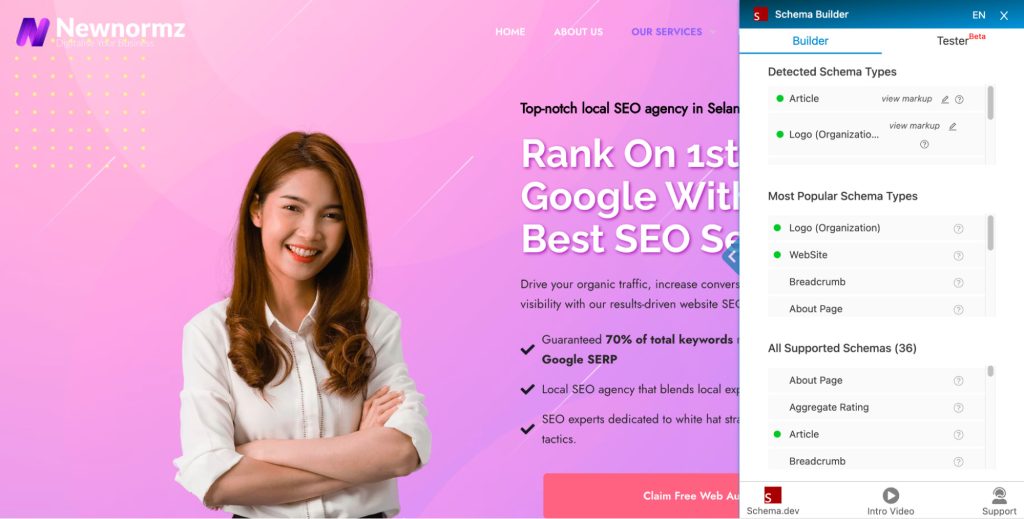
Off-Page Optimisation
14. Claim and Optimise Your Google Business Profile (GBP) Listing
Formerly known as Google My Business (GMB), it is a powerful tool for local businesses. Follow these guides to optimise your local listing:
15. Get High-Quality Backlinks
Backlinks from authoritative and relevant sites are a strong signal of credibility to search engines. Ways to earn high-quality backlinks include the following:
- Content Marketing: Create valuable and shareable content that naturally attracts backlinks.
- Outreach: Contact industry influencers and websites for guest blogging opportunities or collaboration.
- Directories and Listings: Submit your site to reputable directories and industry-specific listings.
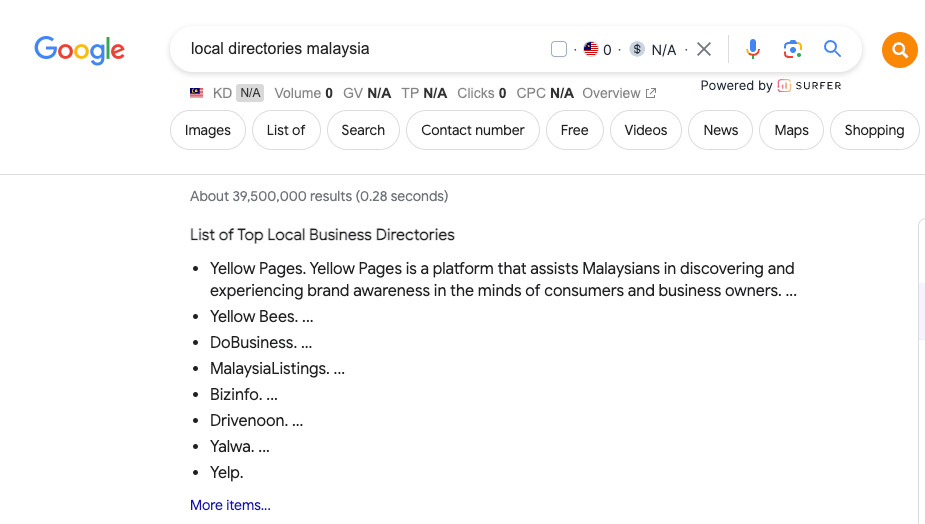
16. Reclaim Site Mentions
Reclaiming site mentions involves:
- Broken Link Reclamation: Identify and fix broken links pointing to your site using tools like Google Search Console.
- Unlinked Brand Mentions: Monitor brand mentions using tools like Google Alerts and reach out to sites that mention your brand without linking. Request a backlink for added SEO value.
17. Social Media Integration
Social media plays a role in SEO by driving traffic and increasing brand visibility. Tips for social media integration include:
- Share Content: Share blog posts, articles, and promotions on social media platforms.
- Engage with Audience: Respond to comments, questions, and messages to build relationships with followers.
- Social Signals: While not a direct ranking factor, social signals (likes, shares, comments) can indirectly impact SEO.
18. Monitoring and Tracking Website Performance
As you implement these strategies, monitoring your website’s performance using tools like Google Analytics is crucial. Key metrics to track include:
- Traffic Sources: Identify which channels (organic, direct, referral, social) are driving the most traffic.
- Keyword Performance: Monitor keyword rankings, click-through rates, and impressions.
- Conversion Rates: Track conversions, such as form submissions, purchases, or other desired actions.
- User Behaviour: Analyse user behaviour metrics like bounce rate, time on page, and pages per session.
Conclusion
By incorporating these detailed strategies for on-page and content optimisations, technical enhancements, and off-page tactics, you can establish a robust SEO framework for your website. Remember that SEO is an ongoing process requiring continuous monitoring, adjustments, and adaptation to stay ahead in the competitive digital landscape.
Check out our guide on how to begin ranking in the local market and SEO Best Practices or engage our digital marketing services in Malaysia today to do it for you.






